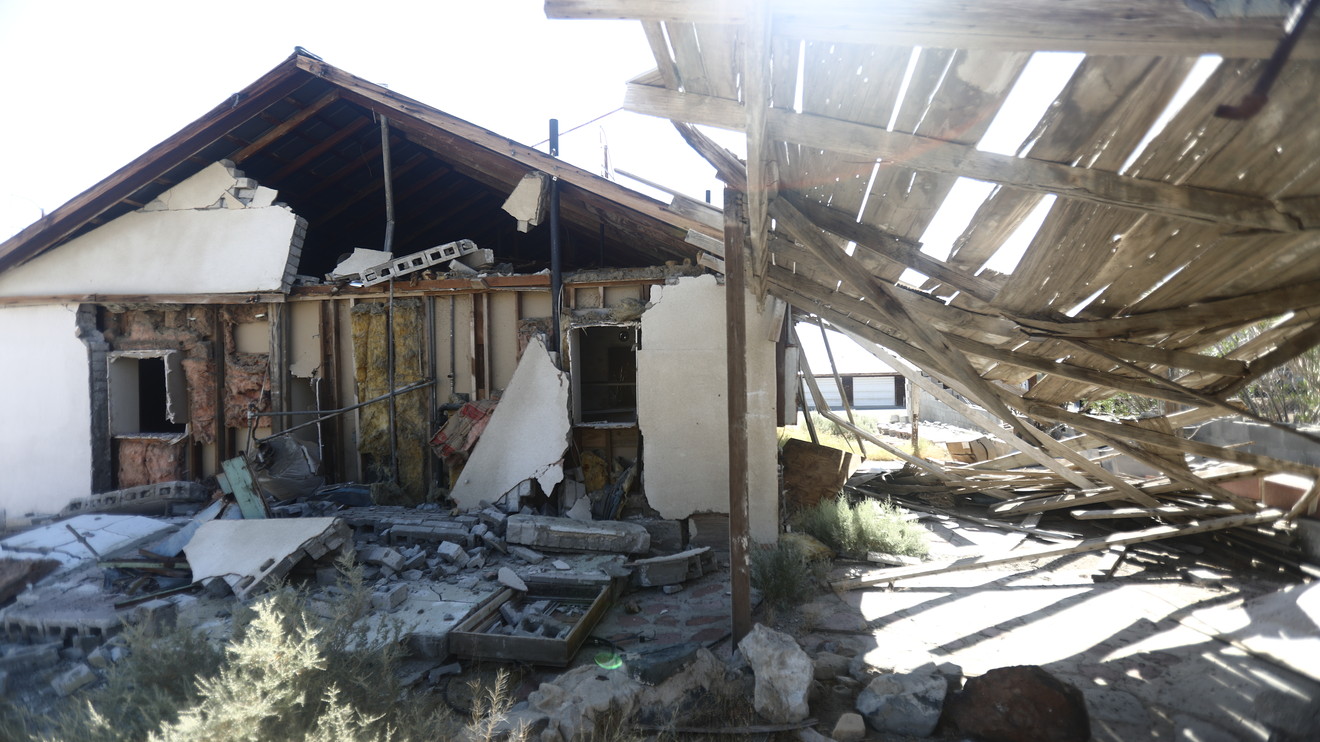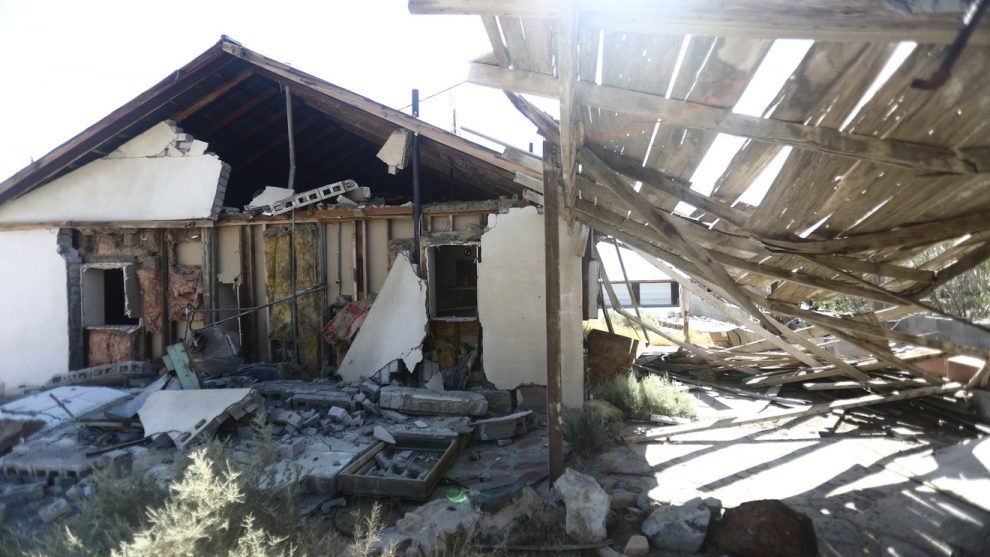
The back-to-back major earthquakes that shook Southern California were a reminder that the “Big One” could strike at any moment, but many households remain woefully unprepared for the potential financial fallout from such a disaster.
On Independence Day, a 6.4-magnitude hit the region, only to be followed by a 7.1 magnitude earthquake the next day, the strongest temblor in the area in decades.
While none of the quakes resulted in any major injuries or fatalities, the incident did displace many residents in the towns located near the epicenter of the first two major temblors. The magnitude of the two big quakes has also stoked concerns about the next “Big One,” an earthquake of roughly magnitude 8.0 or greater. A 2008 study conducted by the U.S. Geological Survey predicted that a 7.8 magnitude-temblor along the southern San Andreas Fault that extends through California could result in 1,800 deaths and up to $213 billion in economic losses.
Despite the serious risks that earthquakes pose to people’s lives and well-being, very few people have taken the necessary precautions to prevent a temblor from triggering a financial disaster. Only 13.3% of California residents had purchased earthquake insurance coverage as of 2017, according to a July 2018 report from the California Department of Insurance.
Don’t miss: What you need to know about disaster insurance
Californians are far from the only people who need to worry about earthquakes. An earthquake can occur anywhere at any time, according to the U.S. Geological Survey. On a state-by-state basis, Alaska historically has registered the most earthquakes. And in recent years, Oklahoma has experienced more earthquakes magnitude 3.0 or greater than California, thanks possibly to gas and oil fracking.
Here are the steps consumers should take to prepare financially for an earthquake, whether or not they live in California:
Choose a home that’s up to code
In earthquake-prone areas like Southern California, consumers should keep temblors on the mind when choosing a place to live. Trona, California, located near the epicenter of the recent quakes, was hit particularly hard, researchers said, because older buildings in the town were built before buildings codes were updated to require specific reinforcement to prevent against earthquake damage, according to the Los Angeles Times.
Similarly, when Chino Hills, a Los Angeles suburb, was hit by a 5.4-magnitude earthquake in 2008, little damage occurred. Experts attributed that good fortune to the fact that a majority of the homes in the town were built in the mid-to-late 1990s after these codes went into effect.
When choosing somewhere to live, home buyers and renters alike should ask when the property was built — and if it was built before these codes went into effect in 1986 whether the structure has been retrofitted. Specifically, consumers should assess whether all sheet-rock walls are reinforced with plywood and if any steel used in the home’s construction was welded in a manner designed to withstand a quake.
If you choose to purchase a home that hasn’t been retrofitted in California, however, there is government assistance you can apply for that will provide financing for the cost of that work.
Purchase earthquake insurance coverage
Earthquakes fall into a category of natural disaster that insurers deem to be “earth movements,” which are not covered under standard homeowner’s and renter’s insurance policies. Other disasters that are similarly excluded include landslides and sinkholes.
Consequently, insurers will only cover losses from a temblor if the resident has purchased an add-on to their main insurance policy or an altogether separate policy. (The one exception to this: A standard insurance policy typically will cover losses caused by a fire that was triggered by an earthquake.)
Earthquake insurance is sold by private insurers — in California, residents can also purchase coverage from the California Earthquake Authority. Like a standard homeowner’s insurance policy, this coverage will include the cost of rebuilding or repairing your home, replacing damaged or destroyed personal belongings, and paying for temporary housing or any other expenses incurred if the home isn’t habitable.
Read more: Natural disasters can hurt people’s credit scores for years afterward
Earthquake policies, however, can be structured differently from your standard homeowner’s insurance policy. For instance, some policies will have separate deductibles for lost personal belongings and home repair costs. And the deductibles can be much higher than your standard policy, in the range of 5% to 15% of the policy’s limit, according to the Insurance Information Institute.
Adding on earthquake coverage won’t necessarily be a cheap proposition. The exact cost depends on the age, size, location and construction of the home, according to consumer watchdog group United Policyholders. On average in California earthquake insurance costs $800 per year, but in San Francisco it can cost up to $5,000. Moreover, a newer home built of wood will be cheaper to insure than an older home constructed from brick.
As for your car, a homeowner’s or renter’s earthquake policy won’t cover any damage. For that, you’ll need to purchase a more comprehensive auto insurance policy.
Pack your ‘financial go-bag’
Given that a major quake can render your home uninhabitable in a matter of seconds, it’s important to have all important financial documents stored in a manner that’s easily accessible and transportable. This includes everything from health insurance cards to insurance policy and vehicle deeds to wills.
Consumers should also be sure to document their home proactively. Photos of what the home looked like before a disaster can aid insurance adjustors in determining how much damage occurred and what will be covered.
In a serious disaster, consumers may have access to debt relief, including forbearance on their mortgage. However, they should be sure to have access to contact information for all banks, credit card companies and lenders in order to get in touch in this case.







